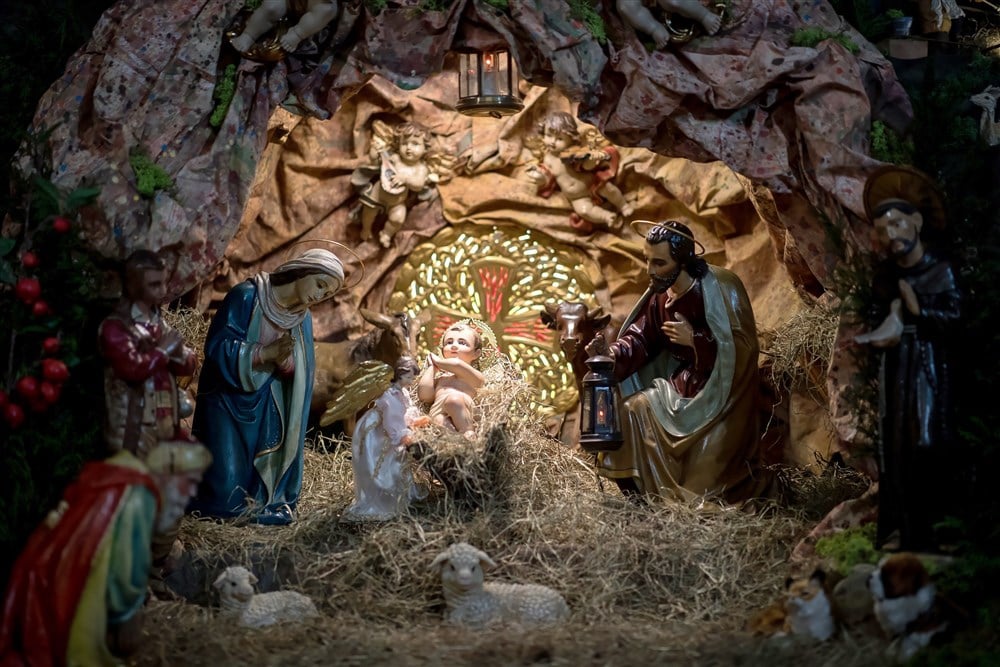As we mark the transition from Autumn to Winter on our calendars, we know that we are well into the Christmas season. And anyway, you would not need to look at the calendar to know that. The decorations in our villages and towns, the Christmas markets, the smell of mulled wine, the concerts, and the windows full of presents remind us that Christmas is coming. However, in the flood of festivities and consumerism alike, we quickly forget the true meaning of Christmas. Is it really the presents? The boost to gross domestic product that the annual jump in consumption at this time of the year represents? What are the origins of the nativity scene or the most popular Christmas carol: “Silent Night”?
It is easy to forget that Christmas is one of the most important Christian and cultural festivals of the year. It is the time when Christians celebrate the coming of our Saviour, Jesus Christ. The content of the holiday is, therefore, not the presents, the famous fizzy drink, nor the polar bears that promote it. No, the content of the holiday is, as the website of the Slovenian Catholic Church said this year, “linked to the mystery of God’s incarnation.”
Christmas time, especially in the West, is a combination of Christian, secular and pagan traditions. Since the time of our ancestors, the winter solstice has been a time of celebrations and festivals. The Church understood this at its inception and thus adapted and gave new content to the celebrations. Namely, it is that on this day, Jesus Christ was born, even though the exact date of Jesus’ birth is unknown. The Church fixed the date of Jesus’ birth in the fourth century after Christ. Thus, we see that His birth not only influenced the spiritual history of the world but also determined its historical foundations. We began to count the years in our history with His birth. Today, some would like to cover this up so that the years would no longer be counted as “before Christ (BC) or anno Domini (AD)” but before or after the “Common Era.”
But what is more important than the date of His birth is His message. It is the message of hope and of God’s love, materialised through the birth of His son Jesus. According to Christian tradition, Jesus was born both man and God to pay for the sins of humanity. In this way, God established a bond and demonstrated His love for man, who inherited the sins of his own ancestors.
Celebrating the birth of Jesus
In the Church, Christmas was celebrated differently from any other holiday in the past – namely, with three services. At midnight, at dawn, and during the day. Even today, priests are exceptionally allowed to celebrate three holy Masses, with the daytime one being the most profound in content, the Roman Catholic Church explains. The central passage read by the priest to the churchgoers is taken from the beginning of the Gospel of John.
“By sending his only Son and the Spirit of Love in the fullness of time, God has revealed his innermost secret: God himself is an eternal exchange of love, Father, Son and Holy Spirit, and he has destined us to share in that exchange.” (The Catechism of the Catholic Church 221).
How the nativity scene came to be
Christmas would not be the same without the nativity scene. But even this does not come directly from the time of Jesus’ birth. How could it, when it is a re-enactment of our remembrance of Jesus’ birth. Historians record that nativity scenes were known as early as the fourth century and were certainly erected by Saint Francis (after whom the current Pope took his name) in a forest near Greccio in Umbria. But, like the exact date of Jesus’ birth, the origin of the nativity scene is less important than the message it conveys. “The images of Jesus, Mary and Joseph tell us, without words, of God’s love for us and of the love that reigns in the Holy Family,” says the Catholic Church’s website.
How was the most popular Christmas carol created?
We know exactly where, when, and how the most important Christmas carol, “Silent Night”, which is now an indispensable part of the Christmas tradition, was composed. It was written by Josef Mohr, the parish priest’s assistant, and the teacher Franz Xaver Gruber, an organist who was also from Oberndorf, set it to music. The composition itself was said to have been done in a hurry. In 1818, Mohr was said to have brought it to Gruber on Christmas Eve itself and asked him to set the text for two solo voices and a choir accompanied by guitar. Gruber obliged, and the song was sung at the midnight mass that same day. Two hundred years later, it is still sung all over the world.
Gal Kovač


